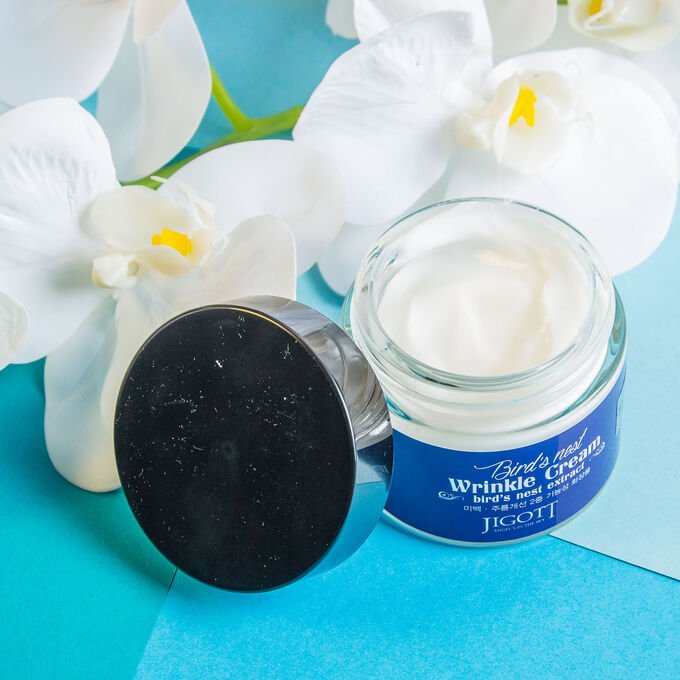Introduction to Wrinkle Creams
Wrinkle creams have gained prominence within the beauty industry, becoming an essential component of many skincare routines aimed at combating the visible signs of aging. These topical formulations are specifically designed to reduce the appearance of fine lines and wrinkles, promoting a youthful and rejuvenated complexion. The primary purpose of wrinkle creams is to improve skin texture and elasticity, thereby enhancing overall skin appearance as one ages.
Among the most common ingredients featured in wrinkle creams are retinoids, peptides, and hyaluronic acid. Retinoids, derivatives of vitamin A, are well-known for their ability to accelerate cell turnover and stimulate collagen production—key processes necessary for maintaining youthful skin. Peptides, on the other hand, serve as signaling molecules that help to fortify the skin’s barrier and improve its firmness and resilience. Hyaluronic acid, a naturally occurring substance in the body, excels at retaining moisture, thus ensuring that the skin remains hydrated and plump, which can significantly diminish the visibility of wrinkles.
The surge in popularity of wrinkle creams is largely attributed to effective marketing techniques that emphasize the desire for agelessness and beauty. Advertisements often highlight miraculous outcomes, drawing consumers with promises of smoother skin and a reduction in aging signs within a short time frame. This has led many individuals to have heightened expectations when utilizing these products, sometimes resulting in disappointment if the results do not align with the idealized images presented in advertisements.
As wrinkle creams continue to dominate the skincare market, understanding their formulations and intended benefits becomes increasingly important. Consumers are urged to be informed about ingredients and to adjust their expectations accordingly, as the efficacy of these products can vary based on individual skin types and their specific needs.
The Effectiveness of Wrinkle Creams: What the Research Says
The effectiveness of wrinkle creams has been a subject of considerable research and debate within the dermatological community. Numerous studies have investigated the various active ingredients commonly found in these products, including retinoids, peptides, hyaluronic acid, and antioxidants. Retinoids, derived from vitamin A, are well-documented for their ability to promote collagen production and accelerate cell turnover, thereby reducing the appearance of fine lines and wrinkles. In clinical trials, participants using retinoid formulations often report significant improvements in skin texture and tone over time.
Peptides represent another promising ingredient in the realm of wrinkle reduction. These small chains of amino acids can signal the skin to produce more collagen and elastin, essential proteins that maintain skin structure and elasticity. Research indicates that creams formulated with peptides often show favorable results after several months of consistent use, contributing to a more youthful appearance.
Hyaluronic acid is known for its ability to retain moisture, which is crucial for plump and hydrated skin. Its presence in wrinkle creams can visibly reduce the depth of lines by keeping the skin nourished and supple. Several studies have noted a marked improvement in hydration and elasticity when subjects apply hyaluronic acid-based products consistently.
Despite the positive findings associated with these ingredients, it is essential to acknowledge the limitations and potential biases in the existing research. Many studies are funded by the cosmetic industry, which may introduce conflicts of interest. Additionally, a notable number of clinical trials have short durations, often failing to assess the long-term results of wrinkle creams adequately. Furthermore, individual skin responses can vary based on genetics, skin type, and environmental factors. As such, while wrinkle creams can yield noticeable results for some individuals, their effectiveness is not universally guaranteed, warranting cautious optimism among potential users.
Consumer Experiences: Success Stories and Disappointments
In the world of skincare, wrinkle creams have garnered significant attention, leading to numerous consumer experiences that present both triumphs and letdowns. Many users report successful outcomes after incorporating wrinkle creams into their daily regimen. These consumers often cite remarkable improvements in skin texture, smoothness, and a reduction in visible fine lines and deeper wrinkles. A user in her fifties shared that, after consistently applying a popular anti-aging cream, she noticed that her skin felt more resilient and appeared significantly more youthful. This testimonial reflects a broader trend where individuals perceive changes that boost their confidence and overall satisfaction with their appearance.
On the other hand, the journey with wrinkle creams is not universally positive. A considerable number of users express disappointment, often stemming from unmet expectations. One consumer recounted using a well-marketed cream for several months, only to see minimal results. This discrepancy between promises and actual performance could be attributed to various factors, including skin type, age, and the specific formulation of the product. For some, the active ingredients in certain creams do not align with their skin’s needs, leading to frustration and a sense of wasted effort. Additionally, variations in individual skin responses complicate the effectiveness of these products, as what works for one individual may not deliver the same results for another.
To provide an objective perspective, it is essential to recognize that while numerous testimonials celebrate the positive effects of wrinkle creams, there are also valid concerns regarding efficacy. This dichotomy underscores the importance of researching and understanding personal skincare needs before investing in these products. Consumers should prioritize matching their choices with high-quality formulations that cater to their specific issues, enabling them to make informed decisions that align with their skincare goals.
Conclusion: Making an Informed Decision on Wrinkle Creams
Ultimately, the question of whether wrinkle creams are worth the hype lies in a careful assessment of their benefits and drawbacks. Throughout this discussion, we have explored the various types of wrinkle creams available, their active ingredients, and the science behind their claims. While many creams may offer temporary improvements in the appearance of fine lines and wrinkles, it is crucial to understand that results can vary widely based on individual skin types, ages, and underlying concerns.
Investing in wrinkle creams can indeed have its advantages, particularly for those seeking to enhance skin hydration and elasticity. Consumers should, however, maintain realistic expectations, recognizing that no product can fully reverse the natural aging process or eliminate wrinkles entirely. It is important to remember that the efficacy of these products often hinges on a consistent application regimen and a holistic approach to skincare.
To further support skin health, individuals should consider consulting with dermatologists or skincare professionals who can provide personalized advice tailored to specific skin conditions and goals. These professionals can recommend appropriate treatment plans and may suggest alternative skincare practices. For example, incorporating a balanced diet rich in antioxidants, utilizing sunscreen to prevent further sun damage, and maintaining a comprehensive moisturizing routine can all be beneficial.
In conclusion, while wrinkle creams can offer some benefits, they should be viewed as part of a broader skincare strategy rather than a standalone solution. By weighing the pros and cons, setting realistic expectations, and seeking professional advice, individuals can make informed decisions that best suit their unique skincare needs.






